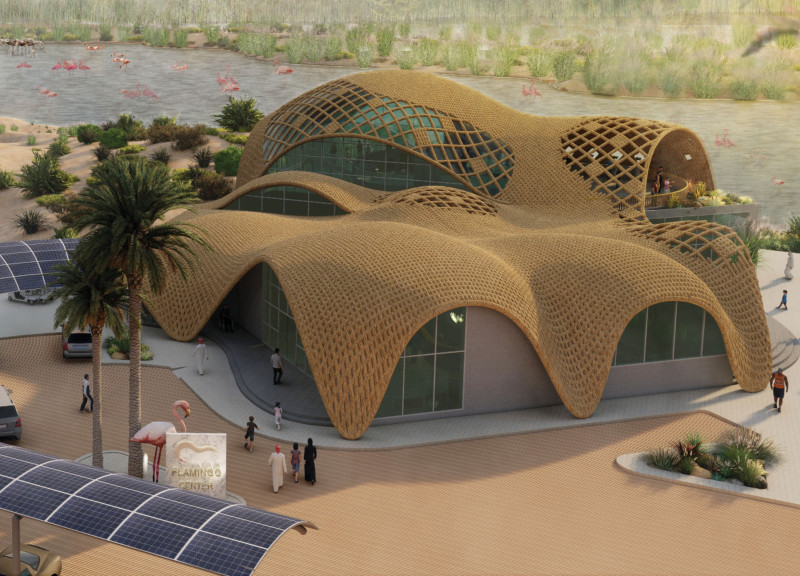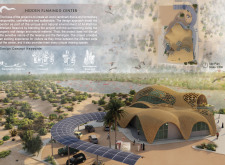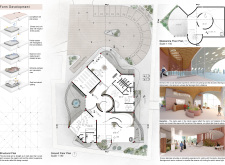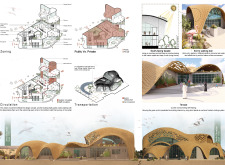5 key facts about this project
The HIDDEN FLAMINGO CENTER is located within the Al-Wathba Wetland Reserve, serving as a space for education and interaction with nature. Designed with a focus on environmental sensitivity, the center blends into the natural surroundings. The overall concept highlights organic shapes and adapts to the landscape, aiming to enhance the visitor's experience while maintaining respect for the ecosystem.
Architectural Concept
The design emphasizes organic forms that encourage flexible use of space for various activities. The layout is carefully planned to connect with the wetlands and minimize disruption to the habitat. The building's orientation takes advantage of wind patterns, thus improving natural ventilation and thermal comfort for visitors.
Structural Design
A partially rotated structural grid supports the center, maximizing shaded areas and lowering energy use. The roof design is organic and fits into the site’s topography, maintaining a visual dialogue with the landscape. Inside, a circular staircase acts as a central feature, guiding visitors between floors and providing views of the wetlands through strategically placed openings.
Sustainability Features
Sustainability plays an important role in the design of the center. Solar panels are included to improve energy efficiency, while large windows and roof openings create an environment filled with natural light. Methods for cross and stack ventilation are implemented to ensure adequate airflow, enhancing indoor comfort and reducing reliance on artificial cooling. The landscaping features a dry garden that conserves water, suitable for the local climate.
Materials and Construction
Specific materials were selected for their environmental benefits. Reeds are used as a primary building material, shaped into reed bricks that offer good insulation. Concrete is incorporated in limited amounts, providing structural support without impacting the natural surroundings negatively.
The roof's design features gentle curves that reflect the landscape’s natural forms. It serves both functional and aesthetic purposes, connecting visitors visually and physically to the wetland habitat.





















































